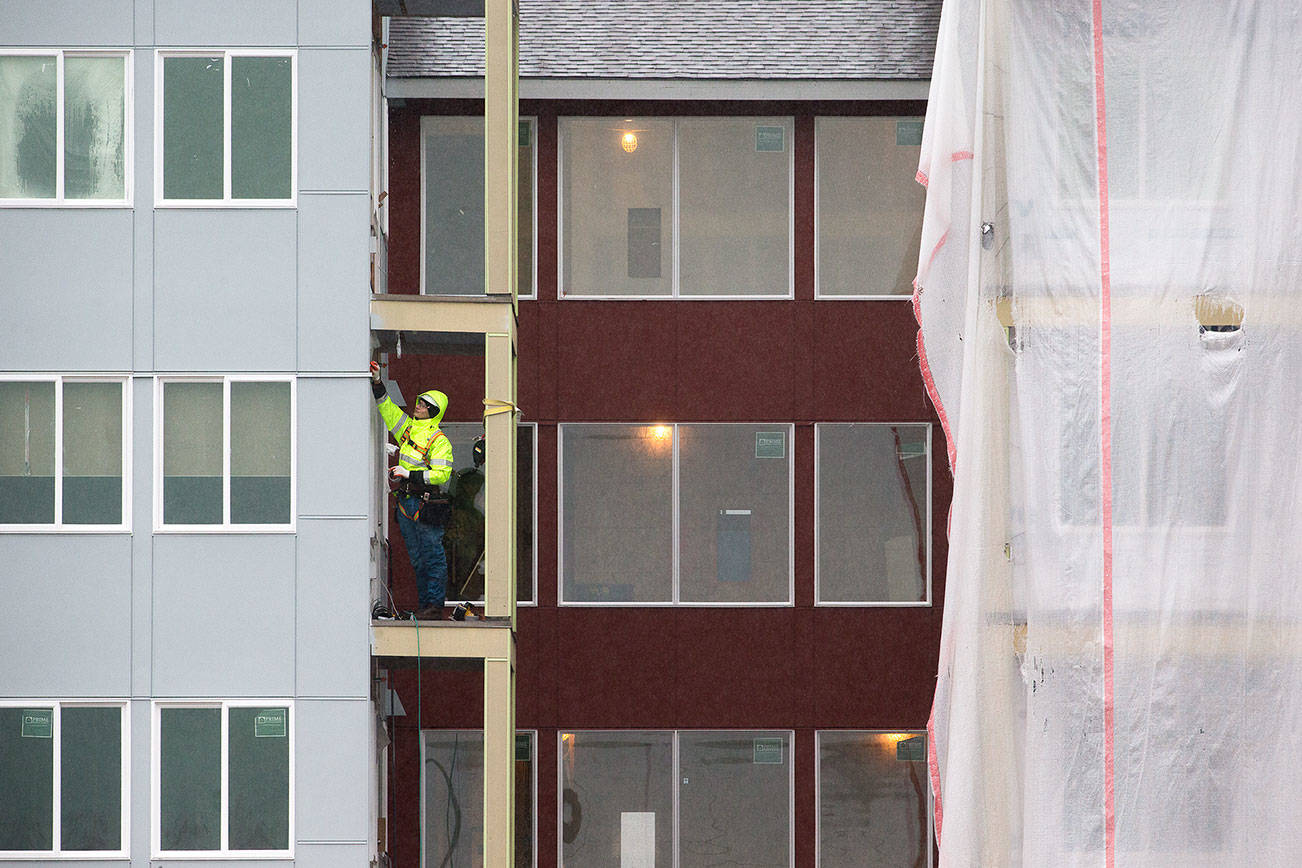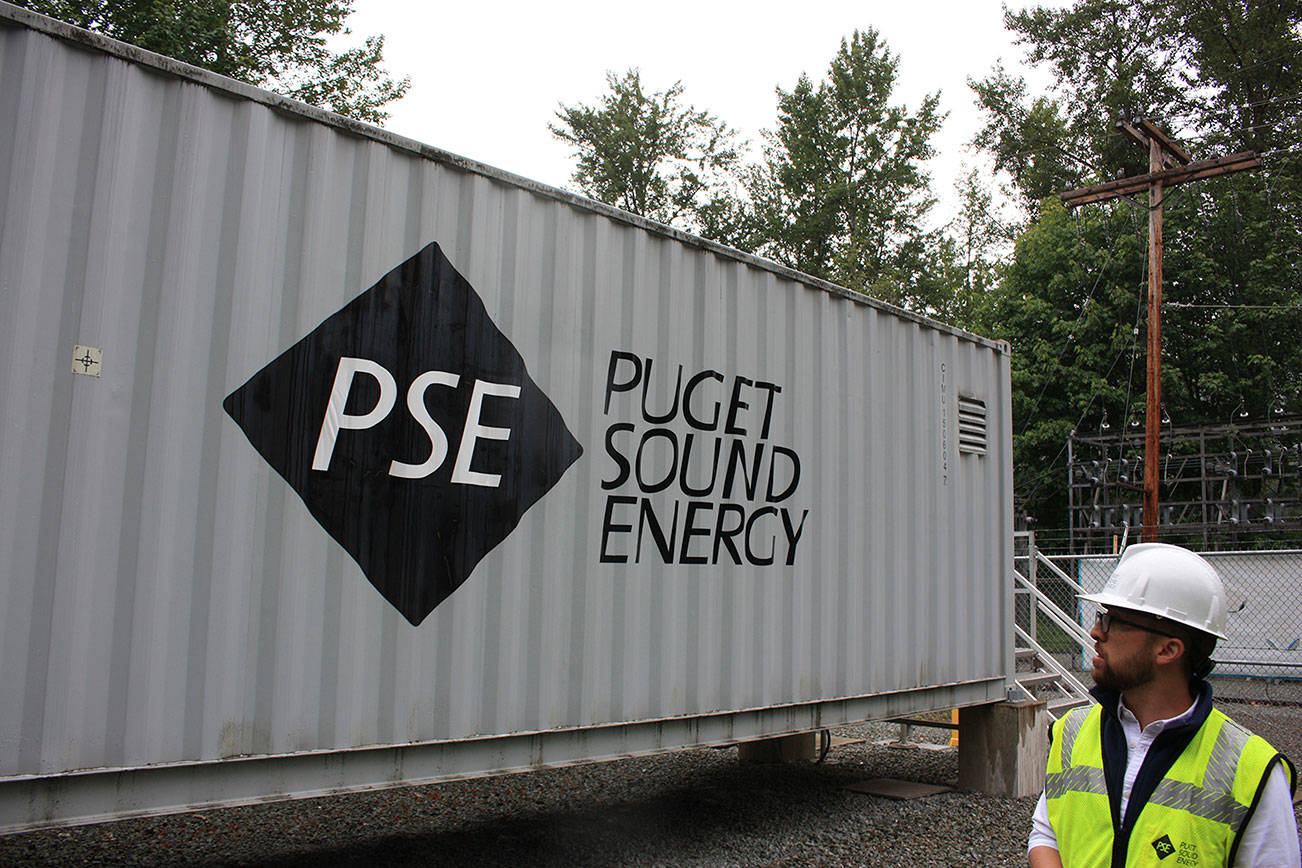Washington state has been under-producing housing stock by 225,600 units between 2000 and 2015, according to a new report released Jan. 10.
The report, created by Up For Growth and ECONorthwest, couples with a 2018 nationwide study. It found that in 23 states, some 7.3 million units were under-produced over the same 15 years. Up For Growth promotes building more units as a critical part of getting out from under the state’s housing crunch, which has left many struggling to pay rent or find houses.
“This isn’t just a Washington-specific problem, it’s really a nationwide phenomena,” said Michael Wilkerson, an economist with ECONorthwest.
Rent in the state has been increasing faster than incomes, a trend that peaked in 2016-2017. But still at least 30 percent of all households in every county are paying more than 30 percent of their income on housing costs. The problem is particularly acute for households earning under $30,000 a year.
“Those who can least afford it are those who are paying the most in rent,” Wilkerson said.
For every household that forms, a little more than one housing unit has to be produced to keep vacancy for new people looking to rent or buy. The national average between 2000 and 2017 was 1.06 new housing units created per new household. But in Washington, it was 0.99.
In short, more people are looking for housing than there are housing units being built.
Compounding this is the high cost of property for developers, who choose to build luxury apartments instead of more affordable housing to recoup costs and turn a better profit. An October study from the Institute for Policy Studies found that several luxury apartments in Seattle were likely sitting empty, possibly serving as a place for investors to park their money.
Of the 225,600 units the market failed to create, around 80 percent of them would have been affordable units. This is defined as units available to households earning less than 80 percent of the area median income. State Sen. Patty Kuderer (D-Bellevue) said this is one of the most pressing issues in her district.
“We need more housing, we also need more affordable housing,” Kuderer said. “And as one constituent said to me, there’s affordable housing and there’s housing I can afford.”
Production of additional housing units could be ramped up in coming years, hitting a stride of just under 16,000 units created per year between 2024 and 2033.
The report also analyzed the ratio of jobs created to housing produced between 2010 and 2017. It found that there were 3.3 jobs created in King County for each housing unit produced, the highest in the state. Snohomish County sat at 2.12 jobs per unit, and Pierce County at 1.98.
State Sen. Hans Zeiger (R-Puyallup) said people are being forced out of Seattle and farther south into his district around Puyallup.
“People would like to work closer to where they live,” he said.
Zeiger wants to see jobs more evenly distributed around Puget Sound instead of clustered in Seattle. However, Rep. Nicole Macri (D-Seattle) has seen the opposite happen, as she described her Seattle district as the number one place where Washingtonians said they used to live.
The report viewed creating more units closer to transit. In a distribution model, it recommended placing more than three-quarters of the units within a mile of transit stations. It further recommended creating a 300 percent increase in density — up to 150 units per acre — within a quarter mile of transit stations.
Under the study scenario, increasing to that level of density near transit stations could result in 2.3 million fewer miles traveled daily. This chalks out to around 74,000 fewer cars on the road annually.
The report advised increasing funding for affordable housing, enacting statewide zoning reform, planning regionally and creating public-private partnerships. And action at the state level could free up local governments from having to fight neighborhood-by-neighborhood zoning battles, said Marilyn Strickland, Seattle Metro Chamber of Commerce’s CEO and former Tacoma mayor.
The Legislature last year invested $175 million into the housing trust fund for affordable housing. Rep. Andrew Barkis (R-District 2) said he hopes that this session more legislation will be passed to facilitate the creation of more accessory dwelling units. It would also have to consider urban and rural needs, which are served by different levels of transit service.
The state could additionally look at reducing barriers to development, such as streamlining its permitting processes and mitigating sales tax requirements for developers. Zeiger said production costs need to be driven down by at least 25 percent for housing to be affordable across the board. The state could use funds to reimburse local governments that provide tax breaks.
Macri pointed to bills that passed last year as positive signs, including HB 1406, which created a sales tax credit. It allows local governments to keep a portion of the state sales tax to be used for affordable housing. The state could also enact duplex zoning, which would allow them to be built more easily.
“The issue of homelessness and housing affordability is affecting the entire state,” Kuderer said. “This is happening everywhere, but it’s happening differently so we can’t have a one size fits all.”









